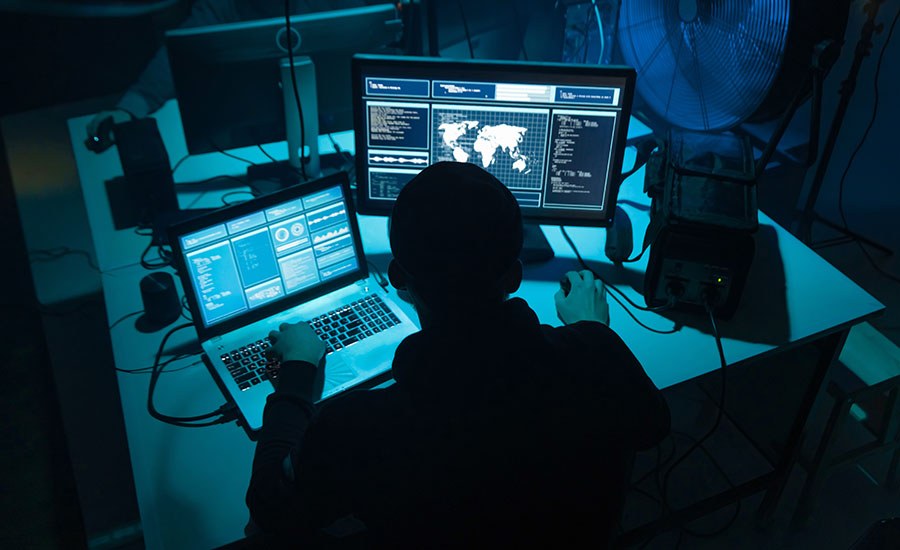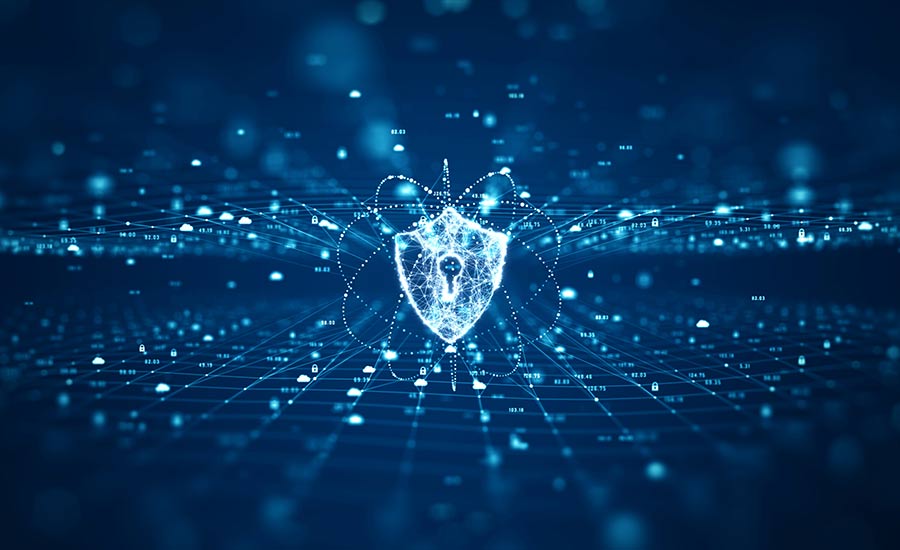
What Is Lateral Movement in Cybersecurity & How Do You Detect It?
What is lateral movement? It’s a tactic hackers use to widen their reach within a targeted company’s network.
Lateral movement allows threat actors to stay hidden while penetrating and taking control of networks. In fact, an industry report found that 54% of the techniques used to identify lateral movement attacks within a network went undetected in 2020, proving just how dangerous these cyberattacks can be.
If you’re wondering how, you can protect your organization from this tactic, we’re here to provide answers.
We’ll explain the three stages of lateral movement and the types of attacks that utilize this tactic. Plus, we’ll offer recommendations for safeguarding your data and introduce you to Analyst1 — the leading threat intelligence tool for analysts.
What Is Lateral Movement in Cybersecurity?
Lateral movement is a tactic that threat actors use to expand their access within a compromised network of an organization, giving them access to sensitive information, such as employee and customer data.
This tactic allows threat actors to stay hidden and keep access to a compromised network — even if they’re found on the first computer they hacked.
The result? Hackers get a foothold of the network, so they can take their time stealing data — for weeks or months after first breaking in.
3 Stages of Lateral Movement
Understanding the stages of this tactic can provide valuable insights into how threat actors infiltrate and navigate their way through a network.
The three stages of lateral movement include:
1. Reconnaissance
In the initial stage, threat actors gather information about the network’s structure, identify its vulnerabilities and locate potential high-value targets, such as databases containing sensitive information, critical servers or systems with administrative privileges.
Hackers can utilize different tools to identify their location in the network, what they can access and what security measures (like firewalls) are in place to stop them.
Here are some tools threat actors use during this stage:
- Netstat: Displays a computer’s active network connections, helping to identify key assets and gather information about the network layout
- The ARP: Provides information about the mapping between IP addresses and physical addresses, to pinpoint individual machines inside the network
- IPConfig (Windows) or IFConfig (Unix/Linux): Discloses the network’s configuration and location details, allowing the threat actor to understand the network’s environment
- The Local Routing: Provides a snapshot of current communication routes for the connected device, offering insights into network paths
- PowerShell: Provides administrative access to threat actors

2. Gathering Privilege
In this stage, threat actors acquire higher-level access or credentials to gain more control over the organization’s network.
To illegally gain credentials, threat actors use the following techniques:
- Credential dumping: A technique that can extract sensitive authentication information, such as usernames and passwords, from a system. For example, in Windows operating systems, attackers often target the Local Security Authority Subsystem Service (LSASS) to dump credentials, as it is responsible for offering Active Directory database lookups and authentication.
- Pass the hash: A technique that allows an attacker to authenticate and gain authorized access to a system without knowing the actual password. Instead, the attacker uses the encrypted hash of the user’s password, which they may have obtained through methods like credential dumping. This hash is used to impersonate the user, effectively bypassing standard authentication steps.
- Keylogging: A technique that records the stroke made by a user on their computer keyboard without their consent. Threat actors utilize a spyware tool to capture sensitive data, such as usernames, passwords and credit card numbers.
3. Gaining Access to Other Networks
In this stage, threat actors continue to compromise systems, servers or sub-networks, now armed with higher privileges, such as passwords.
Once inside the network, they can keep moving from one device to another, dodging security measures until they’re finally caught and stopped.

4 Types of Cyberattacks That Utilize Lateral Movement
Different types of cyberattacks utilize lateral movement to maximize their reach across devices or to navigate through a network until a specific objective is achieved.
Cyberattacks that use lateral movement include:
1. Ransomware Attack
A ransomware attack is a type of attack in which malicious software encrypts files or systems and demands payment for their release — usually in cryptocurrency — in exchange for decryption keys.
After gaining initial access and escalating privileges during the attack, the threat actor can deploy ransomware across multiple systems or high-value targets within the network, maximizing the potential ransom payment.
2. Data Exfiltration
Data exfiltration is the unauthorized movement or removal of sensitive information from a computer or network. This can include anything from personal data and intellectual property to financial records and confidential communications.
During the attack, data exfiltration often occurs after the threat actor has successfully navigated through the network to locate high-value data.
Utilizing their escalated privileges and compromised systems, hackers can stealthily transfer sensitive information to an external location, while staying hidden from security measures.
3. Cyber Espionage
Cyber espionage is a type of attack in which sensitive data is stolen through social engineering techniques, such as phishing — a tactic in which threat actors gain the trust of individuals by posing as legitimate entities, often through deceptive emails or messages.
During the attack, a hacker aims to navigate through the network after an initial breach. The threat actor locates and captures classified data while avoiding detection, often by escalating privileges and using built-in system tools.
4. Botnet Infection
Botnet infection is a type of attack in which multiple computers are compromised and controlled by a threat actor.
These infected machines, also known as bots, perform coordinated tasks, such as sending spam emails or conducting Distributed Denial of Service (DDoS) attacks — a cyberattack in which a server is flooded with internet traffic.
During the attack, a botnet infection allows the threat actor to spread malware across multiple systems within a network.
By gaining control of one device and using it to infect others, the attacker can create a web of compromised systems, making it more challenging for security measures to isolate and remove the threat.
How To Prevent Lateral Movement Attacks
Preventing lateral movement attacks is essential for safeguarding your network and sensitive data. To protect your network from this attack:
- Update your endpoint security solutions: Make sure your endpoint security solutions, such as your antivirus software and firewalls, are updated. Modern endpoint solutions often come with advanced features that can detect and mitigate the techniques commonly used in lateral movement attacks, such as privilege escalation and unusual access patterns.
- Hunt for advanced threats: Utilize threat hunting tools (like Analyst1) to identify abnormal behavior or suspicious activities within your network. By proactively looking for indicators of compromise, you can detect and stop lateral movement before it causes significant damage.
- Maintain proper cyber hygiene: Keep an updated inventory of all devices connected to your network by using a network inventory management tool. Limit the use of admin accounts to only those who need them.
- Implement multi-factor authentication (MFA): Take advantage of a multi-factor authenticator wherever possible to add an extra layer of security that can prevent lateral movement. For example, you can set up a two-step verification method in which a code is sent to a certain mobile device to gain access.
- Conduct cybersecurity awareness training: Make sure your staff is educated about the risks of social engineering attacks, phishing and other tactics that can lead to unauthorized network access. This type of training should cover secure network practices, social media awareness and cybersecurity policies.
- Consider external consultation: Work with cybersecurity experts to perform cybersecurity audits on your network and provide you with advice on cybersecurity best practices. This can provide a fresh perspective on any potential vulnerabilities and the effectiveness of your current defenses.
Prevent Lateral Movement with Analyst1
Analyst1 is a threat intelligence platform and threat detection software that provides advanced cybersecurity solutions to minimize the burden brought about by cyber threats.
We empower cybersecurity analysts and teams with the tools and expertise needed for efficient threat detection, response and mitigation.
From foundational security measures to advanced defense strategies, we help organizations elevate their cyber threat intelligence capabilities.
We make cyber intelligence both accessible and actionable, allowing teams to prioritize data analysis and execute effective countermeasures.
Analyst1 allows you to:
- Automatically detect and identify unusual activities across your company’s computers, networks and users
- Gain access to a centralized location where you can gather, store and inspect threats
- Analyze the scale of the threat your organization is facing
- Receive timely warnings gathered from various sources
- Correspond internal and external data to offer clear threat context
- Generate tasks to effectively mitigate threats
- Reduce mean time to respond to threats
- Create, allocate and assign tickets to your cybersecurity teams
Automating data collection, threat detection and response has never been easier or more efficient for organizations across industries.
With Analyst1, you can drastically improve your cybersecurity to stay one step ahead of threat actors around the world.


